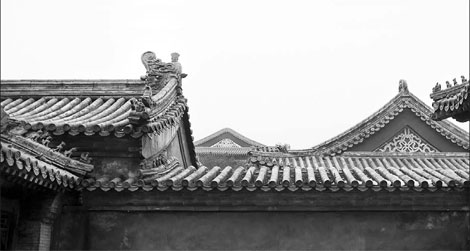


A soon-to-be opened exhibition in the US will display the private treasures of one of the nation's most influential imperial rulers. Zhu Linyong reports
Americans will soon have the privilege of seeing more than 100 Chinese treasures that even the Chinese public has not seen. The Emperor's Private Paradise: Treasures from the Forbidden City, an exhibition of 105 selected items from the Forbidden City, will run from Sept 14 to Jan 9 in three US cities and offer a rare peek into the contemplative life and refined vision of one of the nation's most influential rulers.
The exhibits include a spectacular hanging Buddhist shrine painted on silk, a magnificent throne, carved from zitan, or red sandalwood, a mammoth jade-and-lacquer screen of 16 arhats, or enlightened beings, and calligraphic scrolls written in the hand of Emperor Qianlong, one of the most powerful leaders in imperial Chinese history who reigned at the height of the Qing Dynasty (1644-1911).
The exhibition will include a documentary film and other interactive elements, highlighting the painstaking conservation efforts of Chinese and foreign experts, as well as the gifted folk artisans who restored the objects to their original glory, according to Nancy Berliner, curator of Chinese art at the Peabody Essex Museum, a key organizer.
A computerized walk-through will take visitors through one of the principal structures, the Juanqinzhai (or the Studio of Exhaustion from Diligent Service), restoration of which was completed in 2008.
Viewers will also be able to try their hand at calligraphy at a touch station that will lead them through the brush strokes.
After its debut at the Peabody Essex Museum, in Salem, Massachusetts, the 1.5-million-yuan ($220,807) exhibition will move to the Metropolitan Museum of Art in New York, and the Milwaukee Art Museum in Wisconsin.
It will be shown for three months in each museum, Li Ji, deputy director of the Palace Museum, says.
This is the first time the museum is sending furnishings and daily items used by Emperor Qianlong abroad.
"They will reveal to the world another side of China's ancient emperors, who remain mysterious," Li says.
All the exhibits are on loan from the Juanqinzhai, located inside the Ningshou Palace garden, better known as the Qianlong Garden.
Built in the 1770s, the Juanqinzhai, a two-acre private retreat nestled in the northeastern corner of the Forbidden City, was meant to serve the emperor after his retirement.
Never open to public view, it fell into disrepair after China's last emperor, Puyi, was expelled from the Forbidden City in 1924. For decades, the imperial refuge remained a decrepit storage space.
The upcoming exhibition is a model of international cooperation between the Peabody Essex Museum, World Monuments Fund (WMF), and the Palace Museum, says Berliner who has played an active role in the conservation.
WMF began a partnership with the Palace Museum in 2002 to restore the Qianlong Garden and to assist in training Chinese conservators to tackle the many complex challenges posed by the fragile historic interiors and their unusual mix of materials and techniques.
The restoration of Juanqinzhai occurred at a time of frequent trade and non-trade exchanges between China and the West and this is reflected in the Western influences in the building and its dcor.
The $3-million restoration marks an extraordinary partnership between Chinese artisans and Western expertise.
"The cooperation with the WMF was the first major collaboration between an American conservation group and the Palace Museum," Li says.
The results have been so successful that the WMF, a private, non-profit New York-based preservation group, has extended its alliance with Chinese cultural officials to restore the Qianlong Garden's 26 other buildings and four courtyards.
In March 2007, a broader $15 million agreement, including $5 million from the Chinese side, was reached to restore all 24 buildings and the elaborate outdoor courtyards of the entire Qianlong Garden.
The whole project is expected to be completed in 2019, a year before celebrations to mark the 600th anniversary of the imperial compound begin, according to Li.
